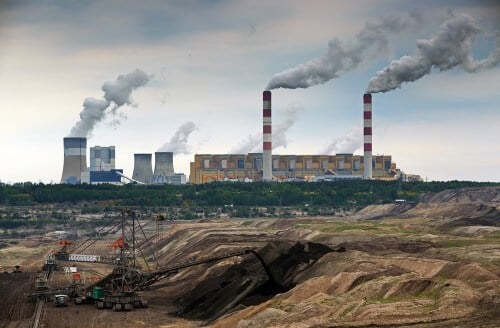The transformation of the carbon dioxide gas emitted from power plants into a valuable chemical will result in a reduction in the level of its emissions to the environment along with energy savings in the plant's expenses. Scientists have now developed a metal-free catalyst that allows this without the need for harsh reaction conditions and high costs.

[Translation by Dr. Nachmani Moshe]
The transformation of the carbon dioxide gas emitted from power plants into a valuable chemical will result in a reduction in the level of its emissions to the environment along with energy savings in the plant's expenses. Scientists have now developed a metal-free catalyst that allows this without the need for harsh reaction conditions and high costs.
Turning carbon dioxide emitted from coal-fired power plants into a valuable chemical will result in a reduction in its emissions to the environment along with energy savings in the plant's expenses. Researchers at the University of Pittsburgh have developed a metal-free catalyst that captures carbon dioxide and converts it directly into formic acid. This process does not require harsh reaction conditions and high financial costs.
Finding ways to capture carbon dioxide molecules emitted into the atmosphere from coal-fired power plants is important in order to reduce their negative impact on the environment while obtaining a clean stream of carbon dioxide that will be used in other industrial processes. Carbon dioxide is one of the main greenhouse gases and its emission requires the development of cheap and efficient catalysts used to separate this gas from other gases found in industrial emissions, while capturing it before it reaches the open air.
![A new catalyst enables the conversion of carbon dioxide and hydrogen into formic acid in a two-step process (yellow arrows). [Courtesy: Image courtesy of Ye and Johnson, ACS Catalysis 5, 2921-2928 (2015). © 2015 American Chemical Society]](https://www.hayadan.org.il/images/content3/2015/09/cs-2015-00396y_00081-492x500.gif)
Metal-organic frameworks (MOFs), a form of physical adsorbents with a cage-like structure surrounding defined atoms, for example metal atoms or other molecules, are effective carbon dioxide storage materials. Researchers at the University of Pittsburgh have developed a catalyst that can be easily integrated into this type of chassis. Through computer calculations, the researchers found that such a system can cleave a diatomic molecule of hydrogen and connect the hydrogen ions, one positively and one negatively charged, to the carbon and oxygen atoms, respectively, to obtain formic acid (HCOOH). This process provides the possibility to merge the carbon dioxide capture step and the conversion step into one common chemical step. The calculations show that the porous chassis remains stable even at the end of the reaction. Future research by the team will focus on testing other catalysts of the same type as well as the effect of the porosity level of the chassis on the efficiency and stability of the entire process.
Article Summary

2 תגובות
3. When organic matter breaks down (like formic acid) it releases carbon dioxide.
Looks very interesting, but a few questions:
1. Where do you get H2 (at a low enough cost to justify the process)? A vague statement about "dissociative adsorption" (from where?) as Google chooses to translate it doesn't really clarify matters.
2. It is useful to find, and quickly, uses for several million tons of formic acid per year (as a start). A not very sympathetic substance that bees and ants use for their chemical warfare. (If you've been stung by a bee or an ant, now you know what was inside)